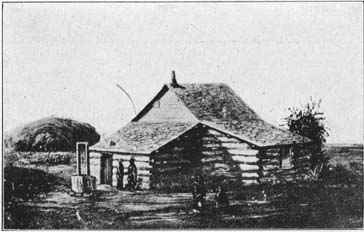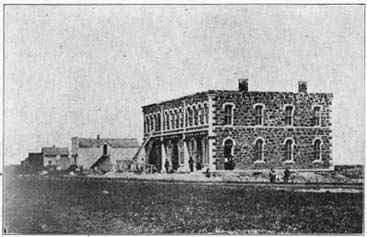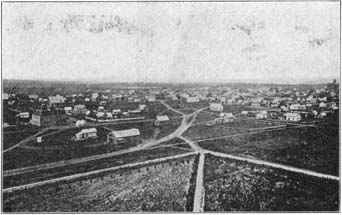crats in their platform asserted that this was
"a white man's government." Temperance agitation was
already active in the new state. Lodges of Good Templars
were being organized in many counties. Their agitation
had alarmed the German voters who had very largely been
republicans in the struggle against slavery. A plank was
adopted by the republican state convention which opposed
all prohibitory laws. Before the convention adjourned it
was reconsidered and stricken out. The democratic state
convention held later adopted the identical plank thus
stricken out. This incident indicated the policy of the
two parties upon the liquor question for the next thirty
years,--the republican party, with a large and aggressive
temperance element in its ranks which persistently
agitated the subject, trying to avoid any definite
declaration or action in order to retain both the liquor
votes and the temperance votes; while the democratic
party uniformly opposed temperance agitation and
anti-liquor laws, thereby especially aiming to unite to
their organization the foreign born citizens. The
election returns simply clinched the fact that Nebraska
had become reliably republican, the republican candidate.
for governor--David Butler--having 8,514 votes while the
democratic candidate, J. R. Porter, had 6,349.
The Union Pacific
railroad was completed across the continent May 10,
1869,--thus realizing visions of a long line of Nebraska
editors, orators and commonwealth-builders. The road had
been incorporated by act of congress July 1, 1862. On
December 2, 1863, ground was broken at Omaha upon receipt
of a telegram from President Lincoln designating the
"western boundary of Iowa, opposite Omaha as the eastern
terminus. This was the end of a long fight by rival
points on the Missouri river. On March 13, 1866, the
first completed section of the road,--from Omaha to North
Bend, -was opened to traffic. That fall it was completed
to Grand Island and the next year beyond the western
boundary of the state. In 1876 the Omaha and Republican
Valley branch was in process of construction, and between
1870 and 1879 the St. Joseph & Grand Island track
completed between those two cities, and became a part of
the Union Pacific system.
The Burlington road was
opened to Council Bluffs January 17, 1870. In 1871 the
track from Plattsmouth to Lincoln was completed and
September 15, 1872, the main line was finished to
Kearney. The Midland Pacific, from Nebraska City to
Lincoln, was built in 1871. In 1874 it was extended to
Seward. Hard times came on, the road was sold under
mortgage, acquired by the Burlington and constructed to
Columbus and Central City in 1880.
The Northwestern line
had its beginnings in these days. In 1871 the Sioux City
& Pacific was built from Blair to Fremont and in
1881, under the name of the Fremont, Elkhorn &
Missouri Valey (sic), extended to Long Pine and
Creighton. The Omaha & Northwestern, from Omaha to
DeSoto, was constructed by an Omaha company in 1870, sold
under mortgage in 1878, and absorbed by the present
Chicago, St. Paul, Minneapolis & Omaha.
From the close of the
war and especially from the time of her admission as a
state a deep, strong tide of immigration had set in to
Nebraska. For near ten years there was an unbroken line
of white topped ships of the prairie crossing the
Missouri river to cast anchor on some quarter section of
Nebraska






